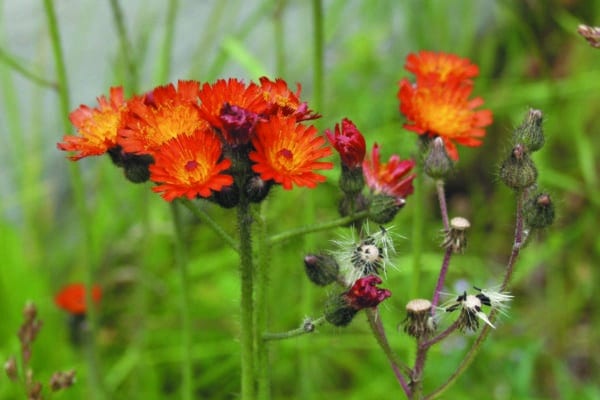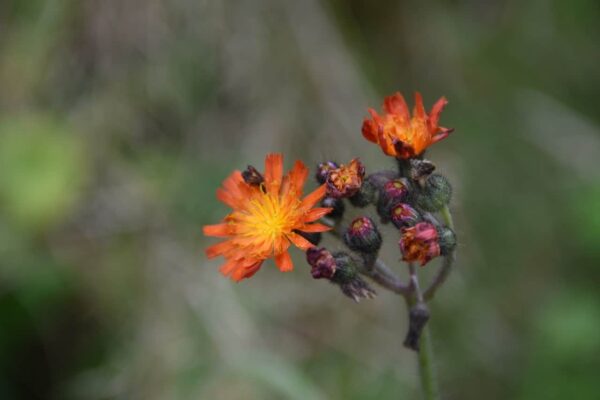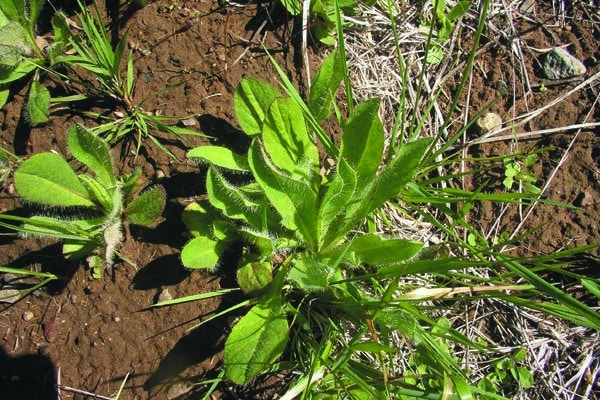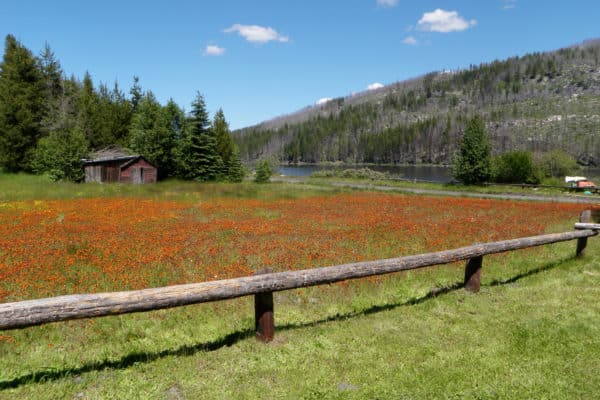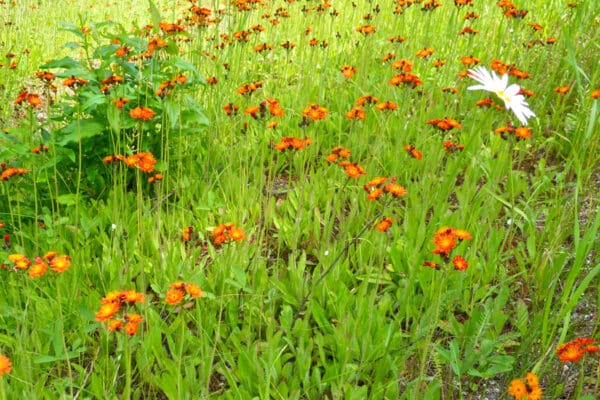Orange hawkweed
About This Species
Orange hawkweed (Orange hawk bit, Fox-and-cubs) can create dense mats that crowd out native plants. It was an ornamental garden plant introduced from Europe. Hawkweeds spread quickly through above ground runners, horizontal roots, and seeds. Agriculture and recreational activities, wildlife, and wind can help the spread of hawkweeds. One plant can produce hundreds of seeds. Orange hawkweed is designated as a Regional Noxious Weed by the BC Weed Control Act, as well as a Management species by the BC Provincial Priority Invasive Species List.
How to Identify
Orange hawkweed grows from 30-60 cm in height with a hairy stem, that contains a milky fluid when broken open.
Flowers are a bright orange-red cluster at the top.
Leaves are bristly-hairy with few to no leaves being found on the stem.
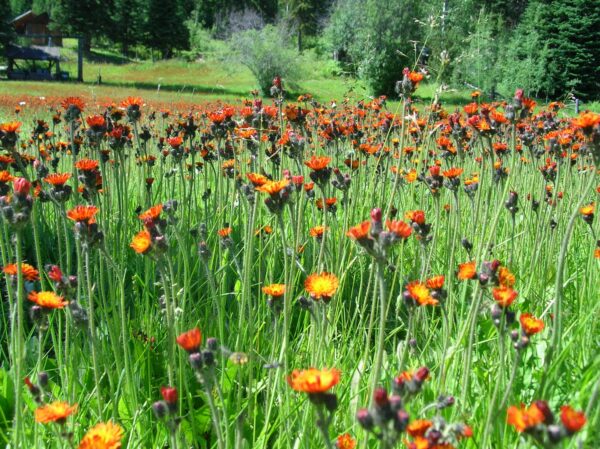
Take Action
Prevention is the best approach.
- Orange hawkweed Factsheet PDF
-
If you need advice about invasive species on your property or you are concerned about reported invasives in your local area, contact your local government or regional invasive species organization.

PlayCleanGo
Learn about best practices

Plantwise
Learn about best practices
A few non-invasive alternatives to plant instead of Orange hawkweed include:
- Arkwright’s campion (Lychnis x arkwrightii)
- Pinks and Carnations (Dianthus spp. and hybrids)
- Alpine aster (Aster alpinus subsp. vierhapperi)
- Heart-leaved arnica (Arnica cordifolia)
- Blanket flower (Gaillardia aristata)
REPORT TO PROTECT BC’S BIODIVERSITY

Use the app
Observe and report to protect BC’s biodiversity

Report through this website
Use our form to tell us what you’re seeing and where.



